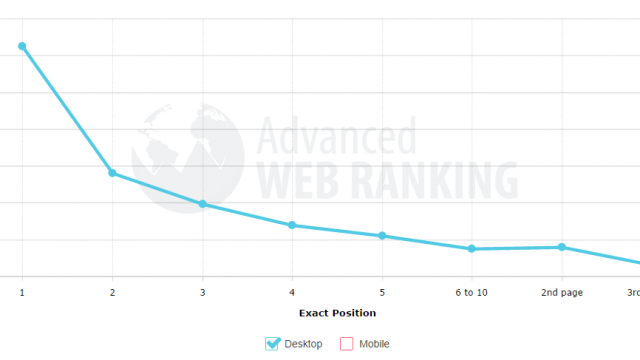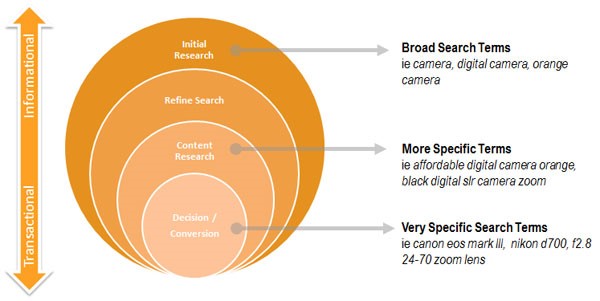Wynn Zhou is the Founder of Novage Communications – a leading web design company in Singapore. She specialises in SEO and loves applying her skills to help local clients. She has successfully set up a baby online store in Singapore.
It’s an unfair world alright! According to a recent study by MOZ, the top search result on Google gets 31.24 per cent of all organic clicks, on average. The clicks drop sharply as we move down the SERP (Search Engine Results Page). The second result from the top receives just 14.04 per cent of the clicks, and the bottom five results on SERP-1 get only 3.3 per cent of the total number of organic clicks.
So, is it possible for your website to outrank all competitors and jump to the top spot? Can your business receive an unfair share of organic clicks? If you are a business in Singapore trying to beat your competitors in SEO, the answer is yes!
The secret sauce to ranking number one on Google
It’s not hypothetical. I’ve achieved the top position for my own website and helped many Singapore-based companies rank at number one for their keywords. My secret is that I don’t try to compete with millions of websites around the world. I focus on Singapore because Google’s Pigeon update gives priority to local results when it ‘feels’ the query relates to local businesses. Other than this key ingredient, here are 10 more things that I’ve found extremely effective at hitting the top spot.
Create a compelling website
Compelling does not mean flashy, but highly functional. A sound strategy must precede your website development. Proper keyword research and planning is the foundation of good SEO. Your main keywords and secondary keywords should be divided among your pages equitably. The internal link structure must be well planned. The navigation and usability should be intuitive and smooth. Your site must satisfy the user intent or the need of your visitors in the easiest and shortest possible way.
In order to do all that, you’ll need to know what your customers want when they search for your keywords. Your customers may be coming to your website to find information, compare prices/products, or to actually make a purchase. Their intent depends upon the stage they’re at in the buying cycle. The following figure should give you the idea:
Also Read: Indonesian online travel agency Traveloka bolsters payment facility
Publish great content in the first place
“Content is the reason search began in the first place,” says Lee Odden, CEO TopRank Online Marketing. Whenever a user searches on Google, he or she is basically looking for content. That’s the simple reason why they call content king.
Great content that resonates with the customer intent will hook people and make them spend more time on your pages. A longer page stay signals to Google that people like your content, so it is likely to rank your page or website higher.
Low quality, irrelevant content will drive visitors away and increase your bounce-back rate, which will hamper your SEO drive to the top spot. Even worse, bad content can make your visitors hit the “back” button and go back to the SERP to click on another result or make a new search. This user behaviour is known as pogo-sticking and it may banish your site from the top spot forever.
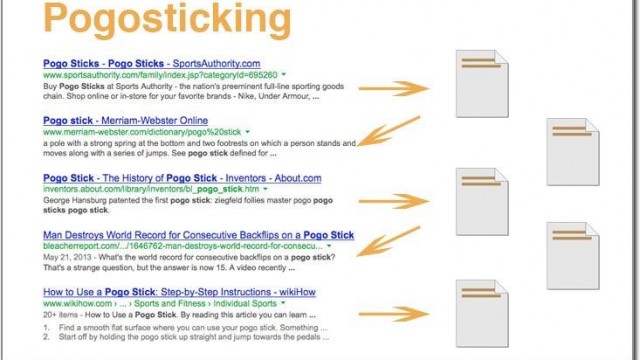
On-page optimisation
Your page should be optimised for the keywords for which you want to rank as number one. The most important keywords must be used to optimise the page title, Meta tags, and Meta description. The content layout should be clear.
Use the appropriate <h1> to <h6> tags to segregate your content in bite-size blocks of information. The internal links and high authority external links should be in place. Take a look at the following wireframe as a good example:
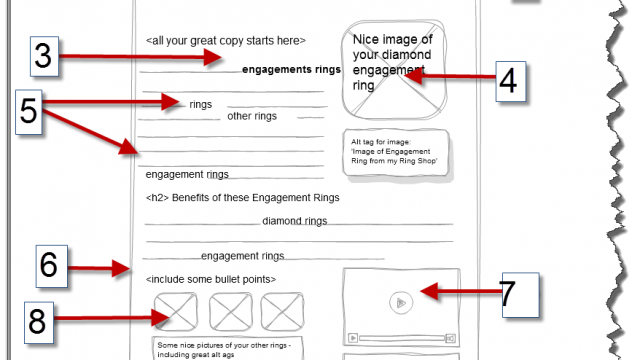
On-page blog
The content and keywords on your site stay pretty much the same for years, unless you have an on-site blog. A blog is the best way to keep adding fresh content and latest topics that are relevant to your business. A high-quality blog can drive you significantly more traffic from search engines and social media, and also get you the valuable incoming links.
Look at the following example to see how Design School blog increased its traffic by 226 per cent in just three months using some simple blogging techniques.

The company’s traffic from social media increased by nearly 500 per cent during the same period!
Social media signal
Social media signal is now a part of Google’s ranking factors. Therefore, you must share your blog posts on social media, Facebook, Twitter, and others, in order to take advantage of the complete spectrum of ranking factors. You’ll get traffic directly from social media, and your SEO ranking will also improve, as the social metrics account for 7.24 per cent of all ranking signals.
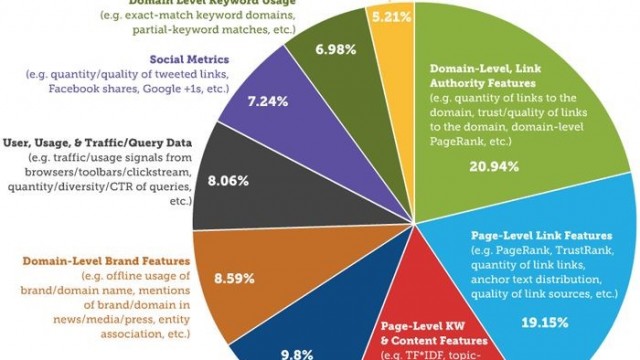
Localisation
The sixth most important ingredient, should you want your website to outrank all competition and rise to the top of Google’s SERP, is to establish your local online presence. It may not be enough to use city names (such as “restaurant in Singapore”) to optimise your keywords, as Google’s Pigeon update slices and dices cities into smaller localities (such as “restaurant in Singapore Flyer”).
To start with, you need a Google+ page and a verified business address. You’ll also need to optimise off-page by listing your business with Singapore Business Director, Yellow Pages, Yelp, and other local and trade directories. You should also make sure your NAP (name, address, and phone number) is identical across all local directories.
Here are the local SEO factors, at a glance:
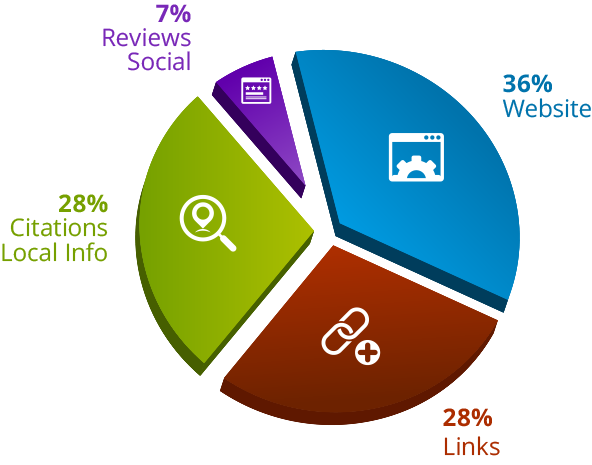
Accomplishing these six steps will most probably get you the coveted top spot on Google’s SERP. However, if your industry is highly competitive, you may need ingredients seven through 10.
Off-page optimization
You need a long-term strategy to build incoming links to your website from high authority domains. Do not go for buying incoming links, as Google will eventually catch and penalise you. Also, do not over-optimise the incoming links by using the same anchor text. The back-links should look natural, otherwise they can have the opposite effect. You can use Backlink Checker to find out the number of your incoming links and the domains from which they are originating.
Content marketing

High-quality content will automatically get shared and give you valuable incoming links. You can share content through your blog and social media channels. A large number of shares, likes, or comments will get you the attention of search spiders, making your site rank higher and higher.
Video marketing
A video on your page helps your SEO by increasing the visitors’ page-stay. It’s easier for your customers to watch a short video than to read through blocks of text.
Keeping in view how popular videos are with Internet users, it’s not surprising that video will drive 69 per cent of all consumer Internet traffic by 2017.
A properly optimised video can also appear on Google’s first page among the video results.
Self-promote

Promoting your business or brand through search advertising, social media and offline can prompt some of the people to search with your business or brand name. Obviously, such searches have no competition and your website will always appear on the top whenever someone searches for your brand. Moreover, paid search will also bring you additional traffic apart from raising awareness about your brand.
So, there you are, enjoying the lion’s share of traffic and clicks at the top spot on Google’s search results. It’s not a dream, but something you can actually achieve. There are over 200 factors that affect SEO, but in Singapore, you can just focus on the points I’ve mentioned above in order to blow your competitor right out of the SEO waters!
Image Credit: ideyweb/Shutterstock
This post originally appeared on e27. To view this post please visit: http://e27.co/10-easy-ways-outrank-competitors-google-singapore-20151022/


